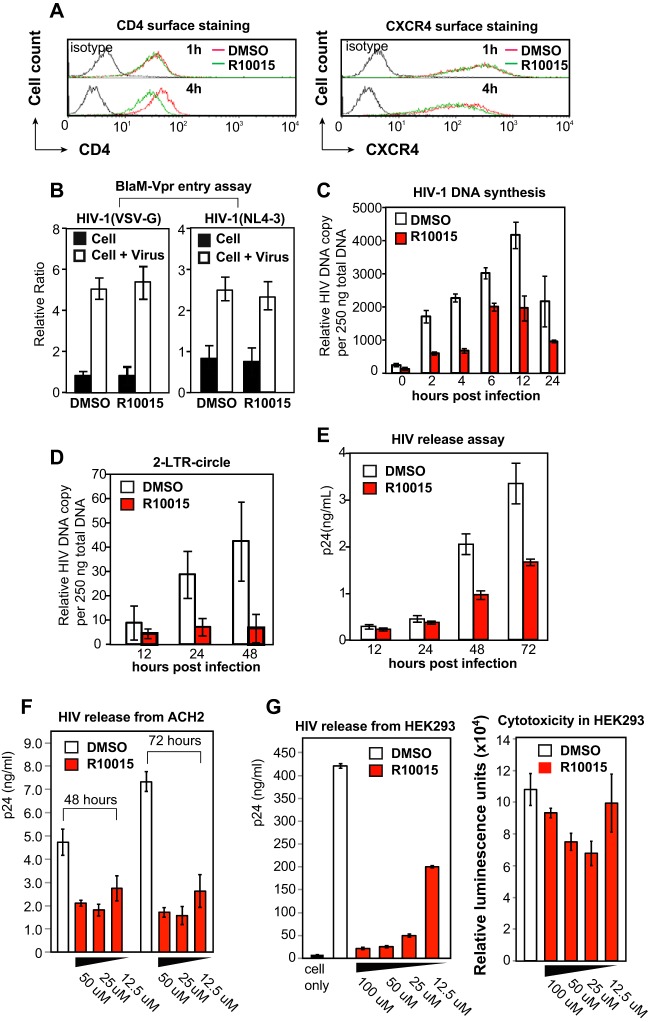FIG 5.
R10015 inhibits HIV-1 DNA synthesis, nuclear migration, and virion release. (A) Effects of R10015 on surface CD4 and CXCR4 expression. CEM-SS T cells were treated with R10015 (100 μM) and then stained for surface CD4 or CXCR4. (B) R10015 did not inhibit viral entry. CEM-SS T cells were treated with R10015 (100 μM) and then infected with BlaM-Vpr-tagged HIV-1(NL4-3) or HIV-1(VSV G) to measure viral entry. (C) R10015 inhibits viral DNA synthesis. CEM-SS T cells were treated with R10015 (100 μM) for 1 h and then infected with a single-cycle HIV-1(Env) for 2 h in the presence of R10015. Following infection, the cells were washed to remove HIV-1 and R10015. Viral DNA synthesis was measured by real-time PCR. (D) R10015 inhibits 2-LTR circle DNA formation. Cells were similarly treated with R10015 and infected. 2-LTR circles were quantified by real-time PCR. (E) R10015 inhibits virion release. Cells were infected with HIV-1(Env) for 2 h, washed, incubated for 12 h, and then treated with R10015. Virion release was quantified by measuring p24 in the supernatant. (F) R10015 inhibits virion release from chronically infected ACH2 cells. ACH2 cells were washed 3 times and then treated with R10015 at various dosages. The cells were cultured for 2 to 3 days. Culture supernatants were harvested and analyzed for HIV-1 p24 by ELISA. DMSO was used as a control. (G) R10015 inhibits virion release from DNA-transfected HEK293 cells. The cells were transfected with plasmid pHIV-1(NL4-3) and then treated with different concentrations of R10015 for 48 h. Culture supernatants were harvested and analyzed for HIV-1 p24 by ELISA. DMSO was used as a control. The cytotoxicity of R10015 in HEK293 cells was also measured using a luciferase-based multiplex cytotoxicity assay, as described in Materials and Methods. The error bars indicate standard deviations.

